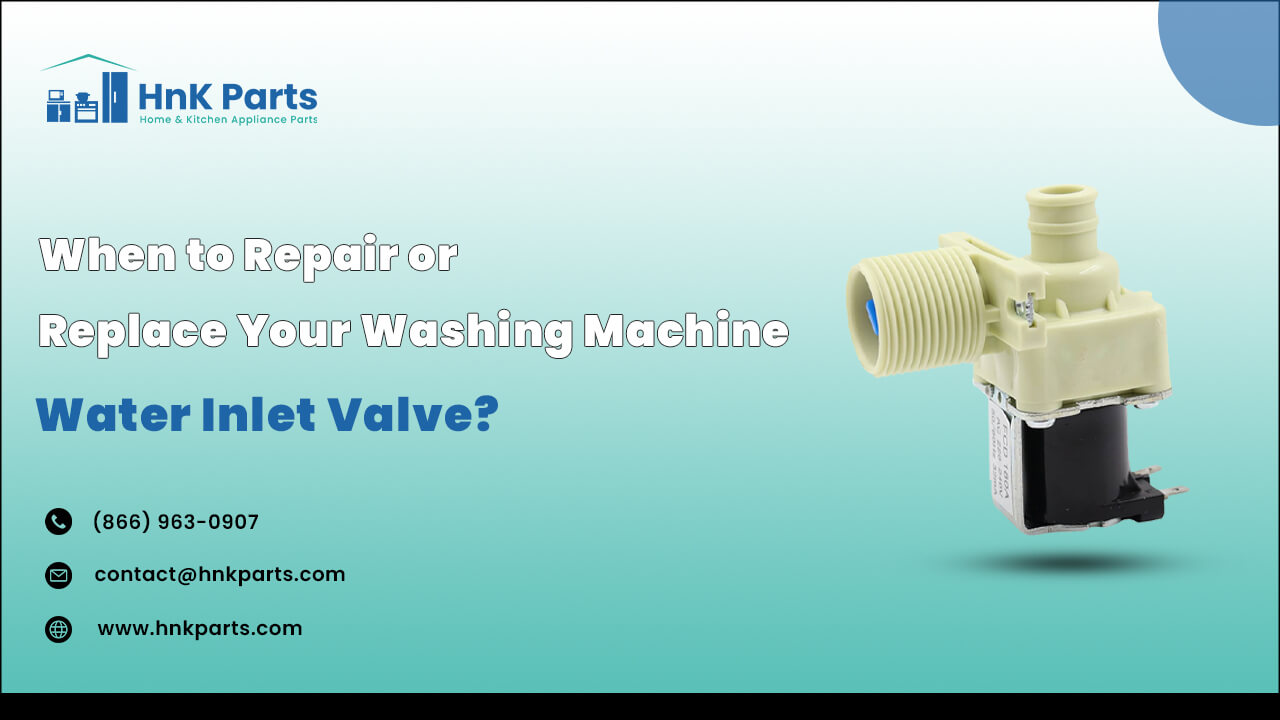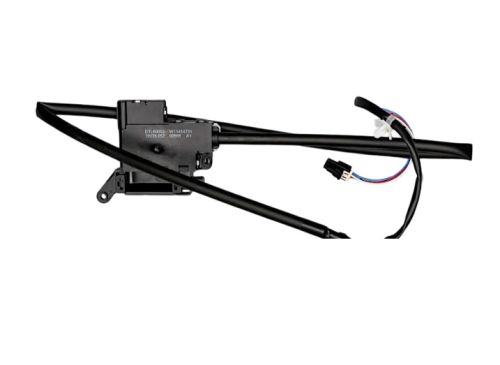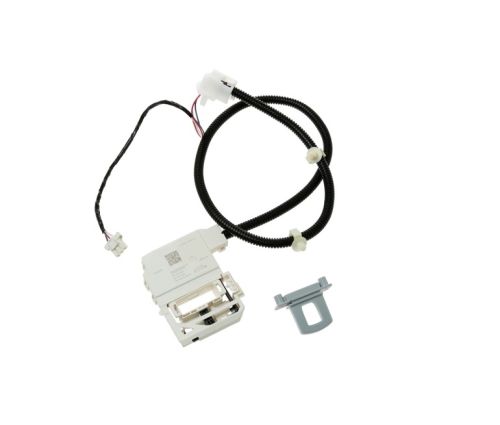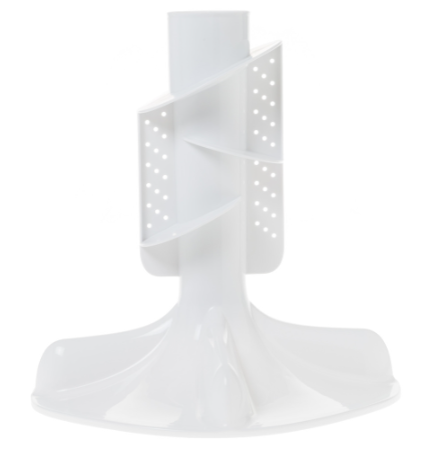
When to Repair or Replace Your Washing Machine Water Inlet Valve
The water inlet valve is an integral component of a washing machine, playing a crucial role in regulating the flow of water into the appliance during the various cycles of operation. This valve serves as the gateway for the entry of water into the machine, controlling the water supply for tasks such as filling the tub for washing, rinsing the laundry, and, in some cases, facilitating the dispensing of detergent and fabric softener. It ensures the proper amount of water enters the machine at the right times, contributing to the effective cleaning and rinsing of the laundry.
| Table of contents What is the function of the water inlet valve in a washing machine? What are the signs of a faulty water inlet valve in a washing machine? When to repair the washing machine water inlet valve? When should I replace the washing machine water inlet valve? Pros and cons of fixing a washing machine water inlet valve Maintenance tips for washing machine water inlet valve |
In the washer water valve, several types of valves are commonly found:
- Single solenoid valve: This washer valve regulates the flow of hot and cold water using a single solenoid. It is often used in top-loading commercial washing machines and functions by manually opening and closing the valve to allow the right temperature of water to enter the appliance based on the specified wash cycle.
- Double solenoid valve: A double solenoid valve is more frequently used in front-loading washing machines. It features two solenoids, one for hot water and the other for cold water, enabling independent control over the temperature of the washer hot water valve of the machine.
- Triple inlet valve: Some advanced washing machines utilize triple inlet valves, which provide additional functionality for certain wash programs. Based on the washing settings, these valves may regulate the flow of the washing machine cold water valve, and hot water valve as a third type of solution, such as detergents or softening.
- Smart valves: Recent advancements in washing machine technology have introduced smart water inlet valves. These valves are equipped with sensors and electronic controls to optimize water usage, monitor pressure, and adjust flow rates, thereby enhancing the overall efficiency and performance of the washing machine.
What is the function of the water inlet valve in a washing machine?
The water inlet valves in the washer control the flow of water into the appliance during different cycles. When the washing machine is ready to start the wash or rinse cycle, the water inlet valve receives a signal from the electrical system to open and enable water into the tub. When the required water level is attained, the valve closes, stopping the flow of water. This process is continued throughout the wash and rinse cycles, with the water entry valve managing the precise amount of water needed for effective cleaning. Essentially, the water inlet valve acts as a gatekeeper, ensuring that the right amount of water enters the washing machine at the right time, playing a pivotal role in the overall performance and effectiveness of the washing process.
HnK Parts is your go-to source for all kinds of washing machine parts. From door seals to valves, drive belts to control boards we have wide variety of parts to choose from.
Refer to our guide about: The Most Common Parts Of Washing Machine
What are the signs of a faulty water inlet valve in a washing machine?
Signs of a faulty water inlet valve in a washing machine can manifest in several ways, indicating the need for inspection and potential replacement. Some common indications of a faulty water inlet valve include:
- Inadequate water flow: A decrease in water flow while filling the washing machine may indicate a problem with the water inlet valve, resulting in insufficient water levels.
- No water flow: If the washing machine does not fill with water, it may be due to a faulty water inlet valve, which prevents water from entering the machine.
- Constant overfilling: If the washing machine continues to fill and overflow, it could be because the water inlet valve fails to cut off properly, resulting in excessive water intake
- Water leaks: A malfunctioning water inlet valve can cause leaks throughout the washing machine, suggesting a problem with the valve's sealing or closure mechanism.
- Incorrect water temperature: If the washing machine is not receiving the correct water temperature for the selected cycle, it could be due to a problem with the water inlet valve, which affects the mixing of hot and cold water.
- Loud noises or vibrations: Unusual sounds or vibrations while filling the washing machine could indicate a broken water inlet valve, which struggles to regulate water flow adequately.
When to repair the washing machine water inlet valve?
Repairing the washing machine water inlet valve is advisable when facing minor issues that can be effectively resolved without the need for a complete replacement.
|
Common Issues |
Description |
|
Clogging |
A common issue with water inlet valves is clogging due to debris or mineral deposits, leading to reduced water flow. This can often be resolved through cleaning. |
|
Inadequate sealing |
Worn or damaged seals can result in leaks around the valve. Replacing the seals can restore proper sealing and prevent leaks. |
|
Misalignment |
In some cases, the water inlet valve may not open or close fully due to misalignment. Adjusting the washer parts mechanism can rectify this issue. |
Cost-Effectiveness of Repairing the Water Inlet Valve: Repairing the water inlet valve can be cost-effective when compared to the expense of purchasing a new valve. The cost of repair typically involves minimal investment in cleaning supplies, replacement seals, or minor adjustments, making it an economical option for resolving minor issues. Additionally, repairing the existing valve can extend its lifespan and contribute to the efficient functioning of the washing machine.
When should I replace the washing machine water inlet valve?
Indications that the water inlet valve assembly needs replacement:
- Persistent malfunctions: If the water inlet valve continues to exhibit problems despite repair attempts, such as inadequate water flow, leaks, or overfilling, it may be time for a replacement.
- Age and wear: As washing machine components age, the water inlet valve's internal parts can deteriorate, leading to frequent issues, and suggesting the need for replacement.
- Physical damage: The washing machine valve leaking,Visible damage, such as cracks, corrosion, or deterioration of the washer valve body, indicates the necessity of a replacement to ensure proper functioning.
- Electrical failures: If the valve's solenoid or electrical components fail to operate consistently, it may be more practical to replace the entire unit rather than attempt extensive repairs.
Factors to consider to change washing machine valve:
If the cost of repairs is significant and approaches or exceeds the cost of replacement, it may be more cost-effective to opt for a new water inlet valve. Assessing the general condition of the washing machine and other components can help determine if a complete replacement is warranted to avoid recurring issues. Considering the age of the commercial washing machine and the potential benefits of a new, reliable water inlet valve in prolonging the appliance's lifespan can influence the decision.
Steps involved in washer valve replacement:
- Unplug the washing machine from the power source and turn off the water supply.
- Locate the water inlet valve, typically behind the machine, and remove any necessary covers or components to access it.
- Disconnect the inlet hoses and electrical connections from the valve.
- Unscrew and remove the old water inlet valve from the washing machine.
- Install the new water inlet valve by securing it in place and reconnecting the hoses and electrical connections.
- Reassemble any removed components and covers, then turn on the water supply and plug in the washing machine to test the new valve's functionality.
Checkout: How To Clean A Washing Machine Filter: A Step-By-Step Guide
Pros and cons of fixing a washing machine water inlet valve
|
Aspect |
Pros |
Cons |
|
Cost-effectiveness |
Repairing the water inlet valve is often more economical than replacing the entire valve or buying a new washing machine. |
While fixing the valve may resolve the current problem, there is a possibility that other components may fail in the future, requiring additional repairs. |
|
Extended lifespan |
Fixing the valve can extend the lifespan of the washing machine, allowing you to continue using it for a longer period of time. |
Repaired components may not come with a warranty, leaving you responsible for any future issues that may arise. |
|
Environmentally friendly |
Repairing the valve reduces electronic waste by preventing the disposal of a functional appliance. |
- |
|
Convenience |
Addressing the issue promptly with a repair can minimize downtime and inconvenience caused by a malfunctioning washing machine. |
Repairing the water inlet valve may involve troubleshooting, sourcing parts, and executing the repair, which can be time-consuming. |
|
Potential future Issues |
- |
Some repairs may require the expertise of a technician, which can incur additional service fees. |
Here are the: 10 Most Common Washing Machine Problems And Solutions
Maintenance tips for washing machine water inlet valve
To ensure the optimal performance and longevity of your washing machine valve, regular maintenance is essential. Implementing a few key maintenance tips can help keep the valve in good working condition. Firstly, establish a routine for regular inspection and cleaning of the water inlet valve. Check for any signs of debris buildup, mineral deposits, or leaks around the valve, and clean it thoroughly with a gentle cleaning solution and a soft brush to prevent clogging and maintain proper water flow.
Additionally, avoid common mistakes that can potentially damage the water inlet valve. One such mistake is using excessive water pressure, which can put undue stress on the valve and cause leaks or other issues. Ensure that the water pressure is within the recommended range to prevent damage. Moreover, refrain from overloading the washing machine, as excessive strain on the appliance can impact the valve's performance over time.
By adhering to a maintenance schedule that includes regular inspection, cleaning, and taking precautions to avoid damaging the valve, you can proactively preserve the efficiency and functionality of your washing machine parts, contributing to the overall smooth operation of your appliance for an extended period.
FAQs
How to clean washing machine water inlet valve?
To clean your washing machine's water inlet valve, disconnect it. Next, unhook the water supply lines and remove the valve. Use a soft brush and a vinegar solution to remove any debris or buildup from the valve.
Should the washing machine water inlet valve on or off during cleaning?
During cleaning, keep the washing machine's water inlet valve turned off to keep water out.
What should I do if my washing machine water inlet valve stuck open?
If your washing machine's water inlet valve is jammed open, switch off the water supply to the machine. Then check the valve for any clogs or damage. Try lightly tapping the valve to see if it loosens. If the problem persists, try changing the valve to ensure the proper operation of your washing machine.









